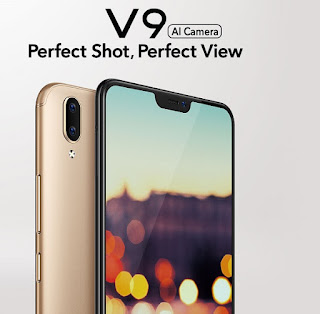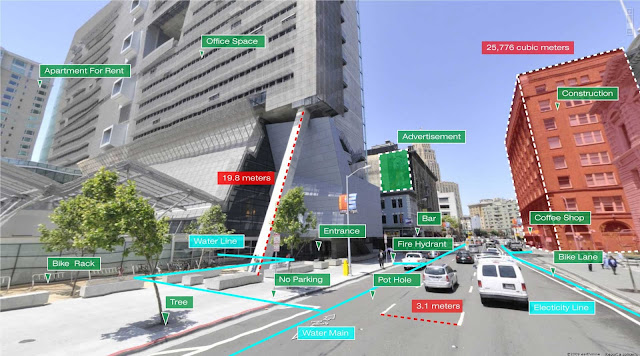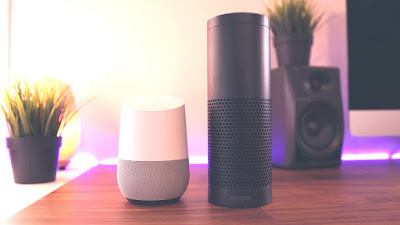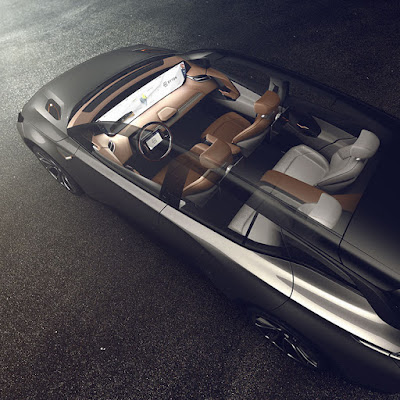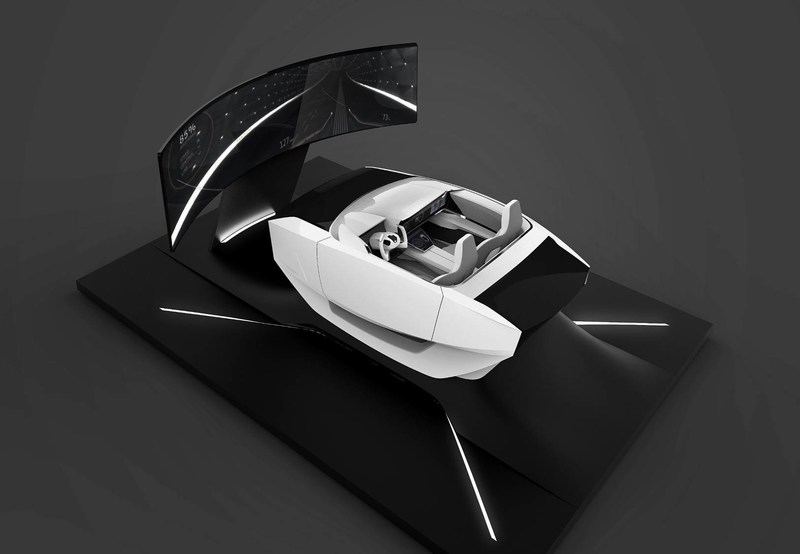Latest news from tech world points towards India's determination towards launch 5G along with other major countries
5G refers to the next generation of wireless broadband technology. It will be the successor of 4G wireless broadband technology. 5G will be totally different from it's it's predecessors. It is not only a high speed mobile network, but also a network of interconnected devices that can be accessed from anywhere in the world. Here device can be anything . 5G network envisages network of different kinds of devices connected using a standardized network backbone,that includes mobile handsets,computers,TV,Home appliances,Vehicles,IoT(Internet of Things) and other electronic devices and machines.
From the user’s perspective, 5G networks will offer higher speeds and more interconnect points. Experts believe that 5G will give a massive boost to Internet of Things (IoT), wherein devices, appliances and gadgets are connected to an internet network and can be accessed from anywhere in the world.
As you know Govt. of India is stressing on nation wide digitalisation programme and telecom war just got another face with the step-in of Reliance Jio. With the introduction of Jio, data has become much cheaper and competition has gone to it;s peek. But when will a full fledged 5G network be launched?.Let us have a look at some of the news about 5G in India and around the world.
AT&T aims to be the first U.S. carrier to provide 5G service
AT&T aims to be the first U.S. carrier to provide fifth-generation, or 5G mobile service to phone customers this year, pitting the wireless giant against VerizonCommunications (VZ) and T-Mobile US (TMUS) in a costly network upgrade race to spur revenue growth.AT&T claims that 'AT&T 5G services will be based on industry standards for 5G. To make this happen, we were one of the key drivers for standards acceleration last year.Because of that acceleration, 3GPP, the international wireless standards body, completed key elements of 5G new radio (NR) standards last month'. With these specifications now available, hardware, chipset and device manufacturers can start development. This allows us to provide mobile 5G services sooner.
"With faster speeds and ultra-low latency, 5G will ultimately deliver and enhance experiences like virtual reality, future driverless cars, immersive 4K video and more",said Melissa Arnoldi, president, AT&T Technology and Operations.
AT&T have already laid foundation for mobile 5G with the launch of 5G Evolution in 23 major metros; Atlanta; Austin; Boston; Bridgeport, Connecticut; Buffalo, New York; Chicago; Fresno; Greenville, South Carolina; Hartford, Connecticut; Houston; Indianapolis; Los Angeles; Louisville; Memphis; Nashville; New Orleans; Oklahoma City; Pittsburgh; San Antonio; San Diego; San Francisco; Tulsa, Oklahoma and Sacramento, California.
Last year, they also launched pre-standards 5G fixed wireless trials in Austin, Texas; Waco, Texas; Kalamazoo, Michigan and South Bend, Indiana with residential, small business, and education customers.
Verizon will launch 5G home internet access in 2018
Verizon has announced that it's launching residential 5G broadband (that is, fixed-in-place wireless) in three to five markets starting in the second half of 2018. It is expected that rollout will begin in Sacramento, California.Recently at MWC(Mobile World Congress) at Fira Barcelona Gran Via ,they were able to provide 5G network for entire area . It was fixed-in-place wireless network.Focus was on providing low latency network rather than a high speed network. Latency is the time taken by the network to respond to the request from user.
Huawei announces its first 5G chip for mobile devices
Huawei surpassed it's rival in 5G mobile device technology. Huawei announced its first 5G chip at this year’s Mobile World Congress 2018 in Barcelona, which will allow the company’s mobile devices to access the next generation of cellular networks, 5G.
The company claims that its Huawei Balong 5G01 chip is the first to support the new 3GPP standard for 5G networks.These 5G chips are capable of downloading data at 2.3Gbps. Huawei CEO Richard Yu says that his company has invested $600 million in the network technology, which will likely be used by everything from self-driving cars to mobile devices to smart homes. Huawei also manufactures network equipment and says that it will be the first company to offer “an end-to-end 5G solution through its network, devices and chipset-level capabilities.”
The chip would appear to be a challenge to other manufacturers like Qualcomm and Intel.
Airtel Launches India’s 1st 5G Capable Network
5G network in India
India launched it's 3G &4G little lately when compare with U.S and Europe countries.But India can't lag behind in 5G network. India is actively involved in the compliance and testing of 5G standards.India has recently constituted a 22-member high-level 5G Forum to evaluate and prepare a roadmap and action plan to meet the 2020 timeline.
With one of the largest delegations at the Mobile World Congress 2018, India highlighted its readiness for 5G services and technology leadership .India is one of the largest consumer of mobile data.This indeed going to bring global 5G players to India.
India's aspiration to take a leading role in 5G and Internet of Things (IoT) will ride on its ability to build core networks for new-age technologies and an enabling industry ecosystem, DoT Secretary Aruna Sundararajan said.
India plans to roll out 5G services for consumers by 2020 and to achieve that objective.Telecom secretary Aruna Sundararajan recently said that the telecom department was expected to finalise a roadmap for 5G services by June this year.
When asked about 5G spectrum auction in an interview during MWC 2018 , she said that the government will decide on it only after the Telecom Regulatory Authority of India submits recommendations to the government.
Airtel, Huawei conduct India’s first 5G network test trial
Bharti Airtel and Chinese telecom giant Huawei have successfully conducted India’s first 5G network trial at a test setup at the Airtel's network experience centre in Manesar, Gurgaon.
Abhay Savargaonkar, director – networks at Bharti Airtel, said the test is small but a significant step in its journey towards 5G mobile networks.He added '5G network data speed will be 100 times faster than current 4G networks.
During the test trial, a user throughput of more than 3 GBPS was achieved using the setup. This is the highest measured throughput for a mobile network in 3.5 GHz band with 100 MHz bandwidth and end-to-end network latency of approximately 1 msec. The setup included 5G RAN operating on 3.5 GHz band, 5G Core and 50GE Network Slicing router.
BSNL gearing up for bringing 5G in India
BSNL is gearing up for 5G as the telco had signed MoUs with Nokia& ZTE and started discussion with Japan's NTT according to a report by DNA..BSNL which is yet to launch its 4G services pan-India BSNL 4G service will be launchedpan India except for Delhi and Mumbai by second quarter of 2018. The reported quoted BSNL Chairman and MD Anupam Shrivastava saying, “The government is likely to infuse Rs 7000 crore in the form of equity while our investment will be around Rs 5500 crore. We expect the approval to come in April.”According to him, 5G is expected to come to India by next year.
Reliance Jio says their existing network is 5G ready
Jio cliams that it has an advantage over other operators when it comes to 5G rollout. One of the challenge in 5G rollout is building the underlying foundation for a resilient network(an all IP network). Jio's network is already IP ready. We know that Reliance Jio is the only network providing VoLTE based calling service in India.All other network providers switch to 2G/3G for calls.
5G network challenges
Unlike traditional 3G or 4G cellular networks that use lower band spectrum, 5G networks also incorporate mmWave spectrum, which is higher in the spectrum band in the 28 GHz and 38 GHz range.These spectrum bands can transmit very large amounts of data because of the amount of available spectrum, but only for short distances. Because of these constraints, the cellular network will rely on these smaller 30-foot towers rather than the bigger and geographically dispersed cellular towers used in 3G and 4G to carry the signals.This requires huge number of new sites and interconnections.
The telecom industry – currently reeling under debt of more than Rs 7 lakh crore mainly due to the competition triggered by the entry of Reliance may force the government to go slow on 5G spectrum auction.
As we have seen 5G network is not only a high-speed mobile network. It envisages an interconnected network of smart devices.Designing 5G capable devices are also a great challenge for manufacturers. Devices should be capable of handing ultra speed data transfer and new protocols that are yet to be finalized.
The core standards for 5G are being developed by 3GPP.For a fully functional 5G network architecture we have to wait till 2020. The first phase of 5G specifications in Release-15 will be completed by September 2018, to accommodate early commercial deployment.The second phase in Release-16 will be completed by March 2020.
Conclusion:Considering above discussed news, we could witness a 3.5 GHz band 5G network in India by mid 2020. Unlike older times, this time Government is keen on Switching to 5G along with other countries. Within a year India will be the largest market for telecom operators.Increased domestic and global competition will also help India in achieving 2020 timeline along with USA,China and Europe.It may take further many years for delivering full potential 5G network that we envisage.




